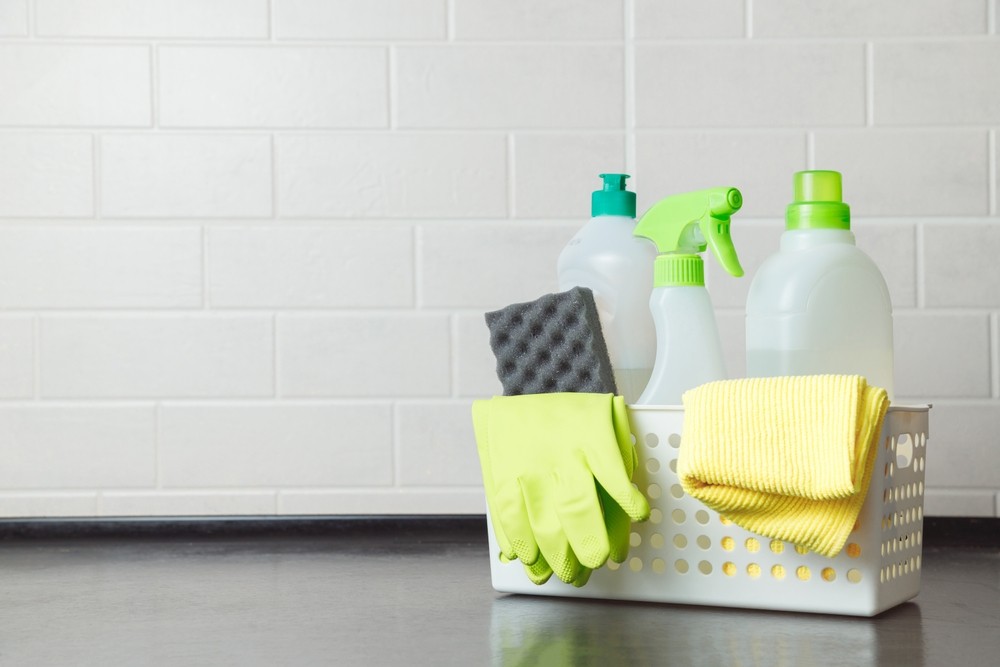Chemical-free cleaning products have become popular among consumers wishing to maintain a clean and healthy home environment without the potential hazards associated with traditional chemical-laden cleaners. This trend reflects a growing awareness of the health risks and environmental impact that conventional cleaning products may pose. Consumers are now more inclined to choose products that promise safety, effectiveness, and financial economy.
The Dangers of Traditional Cleaning Products
Traditional cleaning products often contain harsh chemicals that can be harmful to both human health and the environment. These may include ammonia, bleach, phosphates, and other synthetic compounds that account for their cleaning power but also pose significant risks. Prolonged exposure to these chemicals can lead to respiratory issues, skin irritations, and even hormonal disruptions. There is also the environmental concern as these substances can pollute water systems and harm wildlife.
The volatile organic compounds (VOCs) found in many conventional cleaning solutions contribute to indoor air pollution, which can be particularly concerning given that people spend a significant proportion of their time indoors. Poor indoor air quality can exacerbate conditions like asthma and allergies, especially among vulnerable populations such as children and the elderly.
The Rise of Chemical-Free Cleaning Products
Chemical-free cleaning products offer a safer alternative for those concerned about health and environmental impact. These products typically leverage natural ingredients that are non-toxic and biodegradable, ensuring that they do not contribute to indoor pollution or environmental degradation.
One of the significant advantages of these products is their safety for children and pets. Since they do not contain harmful chemicals, there is less risk in case of accidental ingestion or contact. They are usually gentle on surfaces, minimizing damage to household items over time.
Natural Ingredients and Their Cleaning Power
The efficacy of chemical-free cleaners is often questioned, but a closer look at their ingredients reveals powerful natural cleansing agents:
- Vinegar: A natural acid, vinegar can dissolve mineral deposits, cut through grease, and eliminate odors effectively. It’s an excellent ingredient for cleaning windows, countertops, and even appliances such as washing machines and dishwashers.
- Baking Soda: Known for its abrasive quality, baking soda is perfect for scrubbing dirty surfaces without scratching. It also neutralizes odors and can be used to brighten laundry.
- Lemon Juice: The acidity in lemon juice gives it antibacterial properties, making it effective for killing bacteria. The fresh scent also acts as a natural deodorizer.
- Essential Oils: Oils such as tea tree, lavender, and eucalyptus not only provide pleasant scents but have antiseptic and antifungal properties.
- Castile Soap: Made from olive oil, this soap is biodegradable and versatile, suitable for various cleaning purposes, from washing dishes to cleaning floors.
These ingredients illustrate how nature offers effective solutions for cleanliness without the need for synthetic chemicals.
Cost-Effectiveness of Chemical-Free Cleaners
An often-overlooked benefit of chemical-free cleaning products is their potential for cost savings. While some ready-made green products might come at a premium, homemade solutions using basic natural ingredients can be very economical. For example, a simple vinegar and water solution can replace multiple conventional cleaners for various surfaces in the home.
Bulk purchasing of natural ingredients like baking soda or vinegar can further reduce costs. Additionally, because these ingredients are multipurpose, consumers avoid buying different products for each cleaning task, which is common with traditional cleaners.
Investing in reusable cleaning tools such as microfiber cloths, which are durable and efficient, can also reduce long-term costs. These cloths can be used hundreds of times, reducing the need for disposable wipes and paper towels.
Environmental Impact
Chemical-free cleaners are kinder to the environment, as they biodegrade more readily than their chemical counterparts. This reduces the pollution load on our water systems, improving the quality of natural bodies of water and safeguarding aquatic ecosystems.
Consumers who use chemical-free cleaning solutions contribute to reducing plastic waste. Many green cleaning products offer concentrates that require less packaging, while homemade solutions often utilize existing containers, minimizing excess plastic use.
Making an Educated Buying Decision
When seeking out chemical-free cleaning products, informed consumers should pay close attention to ingredient lists. Many products labeled as “green” or “natural” may still contain harmful substances due to lack of regulation in labeling. Look for third-party certifications or eco-labels that verify the product’s claims.
Consumers should also consider what cleaning tasks they require. For example, a household that deals with frequent pet stains may need an enzymatic cleaner, while others might focus on all-purpose solutions. Understanding personal cleaning needs can direct consumers to the most appropriate chemical-free products.
In-store demonstrations or trials can be valuable. If possible, test products before purchasing to ensure they meet personal standards for effectiveness and ease of use. Customer reviews and testimonials can also provide insight into performance and reliability.
DIY Chemical-Free Cleaning Solutions
For those inclined towards a hands-on approach, creating DIY cleaners can be both satisfying and efficient. Here are some simple recipes to start with:
- All-Purpose Cleaner: Mix one part water with one part vinegar in a spray bottle. For added scent, include a few drops of essential oil like lavender or lemon.
- Glass Cleaner: Combine one cup of water, one cup of vinegar, and a spoonful of cornstarch. Shake well before using to achieve streak-free glass surfaces.
- Kitchen Cleaner: Sprinkle baking soda on surfaces, then scrub with a damp cloth or sponge. Follow up with a vinegar spray, which will bubble and help lift stains and grime.
- Disinfectant Spray: Mix two cups of water with one tablespoon of Castile soap and 20 drops of tea tree oil. Use on surfaces to eliminate germs.
- Carpet Freshener: Combine one cup of baking soda with essential oil drops of your choice. Sprinkle over carpets, allow it to sit for 15 minutes, then vacuum up.
These homemade solutions are easy to prepare and provide a sense of productivity while ensuring a safe home environment.
Consumers today are aware of the need for cleaner, safer, and more sustainable living environments. By understanding the benefits and possibilities of chemical-free cleaning products, they can make informed choices that positively impact their health, home, and wallet. Whether through careful product selection or crafting DIY solutions, the shift towards natural cleaning offers a responsible path to maintaining a fresh and safe home.



